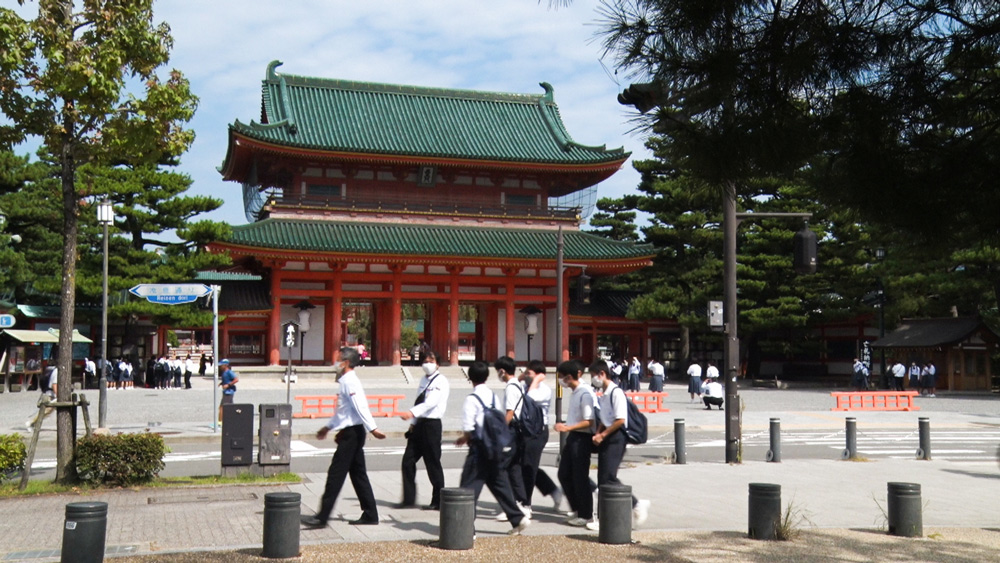
(C) “Kokusô no hi” Production Committee
“Kokusô no hi” The true nature of “fear” revealed by the flat depiction of the daily life of that day
2023.09.19
“Scary” acquired through rich metaphors
What really fascinated me about this work was the images of the ``queues'' formed by people. People lining up at pachinko parlors, children lining up in an orderly line following their teachers' instructions on a school trip, and large trucks lining up to build a base in Henoko. And people lined up for hours to lay flowers to former Prime Minister Abe. The image of such ``rows'' that frequently appears in the work inevitably evokes the obscurity of the Japanese individuality and uncritical obedience to authority.
Oshima responded to the writer's point by saying, ``I didn't intend to go that far,'' but Oshima's flat perspective of reporting and his focus on everyday life created room for a variety of interpretations, and the audience embraced it. It is clear that the image has been enriched.

“Kokusô no hi” (C) “Kokusô no hi” Production Committee
The most important cuts that symbolize this work are the ``everyday life'' at the Shibuya scramble crossing at the beginning and end. Shibuya Scramble Crossing is said to have one of the busiest traffic volumes in the world. At the end of the movie, the total population of Japan is suddenly displayed as a ticker over images of people passing through the area. The meaning is not explained, but the point is clear. ``In the end, there was no division due to state funerals, and in fact, many people were not even interested in state funerals...What exactly are Japanese people?'' This seems like an honest confession about how Oshima's goal of ``depicting a gradation of Japanese people'' has fallen apart.
The author has a vision of Arata Oshima standing in the scene of a scrambled intersection. As he watches in amazement the waves of people passing by, he looks into the pitch-black hole of ``Japanese indifference.'' The sight of a man staring into an unexplained abyss with despair is the most chilling sight.
The success of this film lies in the director's confession of his plans and their setbacks. It is in this structure that the unique source of fear lies, leaving an indelible mark on the hearts of the audience.
Text: Tetsuya Inagaki
TV director. My personal goal is to realize a documentary project that depicts the obsessions of manga and movie creators. Programs he has directed in the past include ``The Godfather : The Man Who Revolutionized Manga'' (WOWOW), ``Takeshi's Birth: Master and Asakusa'' (NHK), ``Master and Disciple Story: The Encounter That Changed My Life'' [Masahiro Tanaka x Katsuya Nomura ]” (NHK BS Premium)
Reserve your “Kokusô no hi” now↓
"Kokusô no hi"
Pole Pole Higashi Nakano and other locations will be released nationwide from Saturday, September 16th.
Distribution: Dongfeng
(C) “Kokusô no hi” Production Committee

